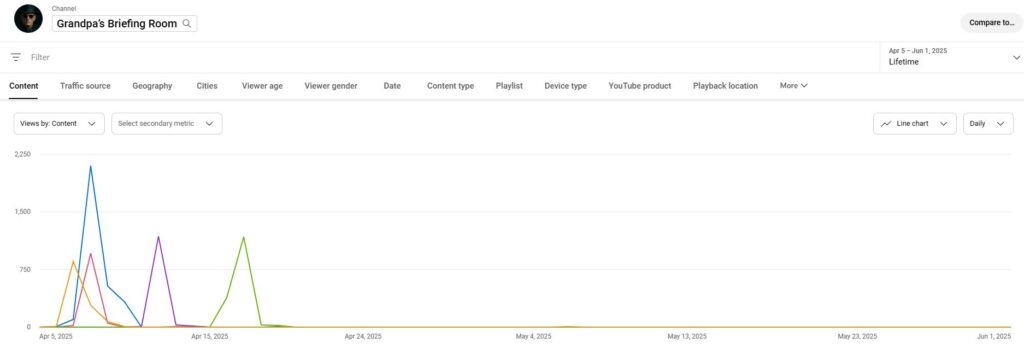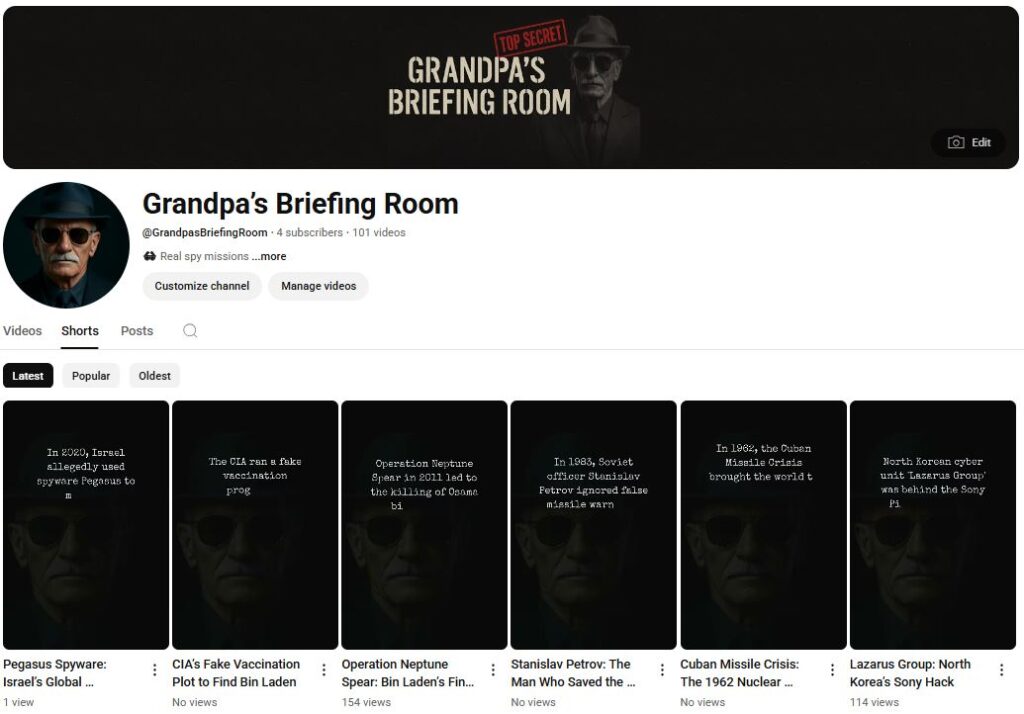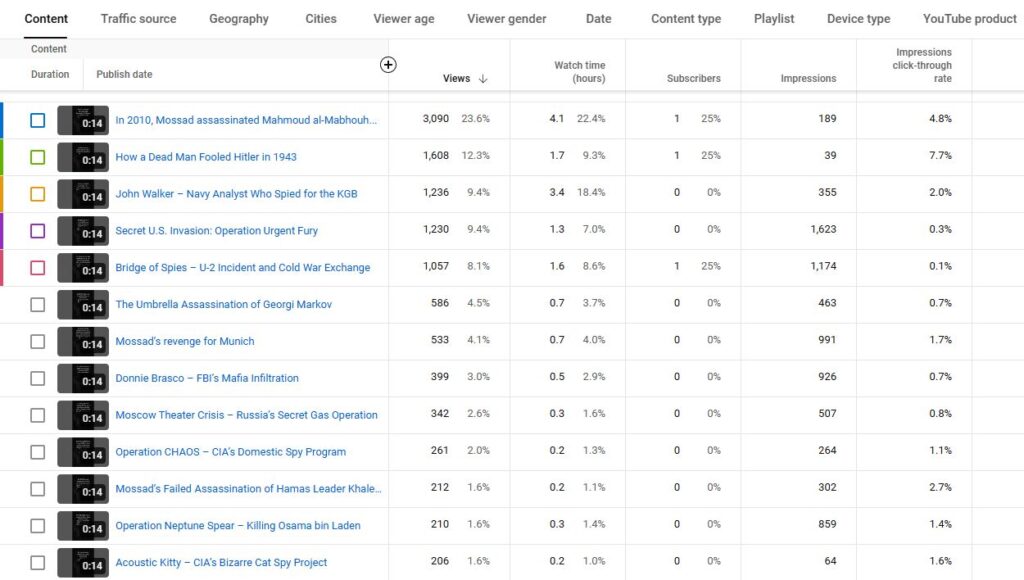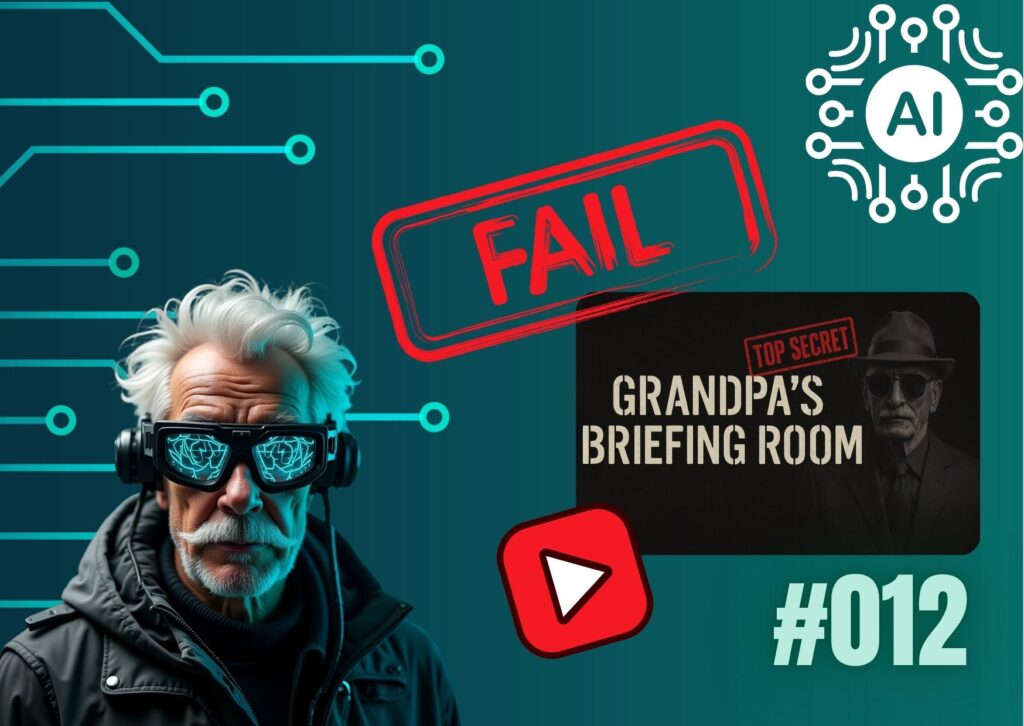This wasn’t about going viral.
It was about testing a system.
As part of my broader Tireless Grandpa project — where I launch small, AI-assisted experiments to see what works online — I decided to publish 100 YouTube Shorts in 30 days. No heavy editing, no voiceover, no optimization. Just a batch-created, faceless channel to track what happens when you rely purely on volume and automation.
Let’s be clear from the start: I didn’t put a ton of effort into this.
It was a bulk experiment using ChatGPT and Canva. I wrote, designed, scheduled, and walked away.
Now, nearly two months later, here are the final results.
Performance Overview
100 Shorts published in 30 days. All of them faceless, voice-free, text-driven stories from the world of espionage and Cold War intrigue.
📈 Total views: 13,121
⏱️ Total watch time: 18.4 hours
👥 Subscribers gained: 4
🎯 Videos with 1,000+ views: 5
📉 Videos with 0 views: Several — even weeks later
🔁 Most viewed video: 3,090 views
👁️ Total impressions: 27,199
📊 Click-through rate: 0.9%

Quick Recap: What This Project Was
The YouTube channel is called Grandpa’s Briefing Room — a faceless, AI-powered Shorts channel featuring 15-second spy stories.
Each video was generated with:

– ChatGPT Plus (for script prompts)
– Canva Pro (for visuals and batch rendering)
– YouTube Studio (for upload scheduling, 3–4 per day)
No voice. No face. No CTA. No promo.
Just 100 videos scheduled and published over the course of one month.
The question was simple: Can this kind of content get reach without tweaking anything mid-way?
Content Analysis
Honestly, it’s unclear why some videos reached 1,000+ views while others never broke 10 — despite being virtually identical in format and quality.
– Early videos did best. Some got picked up quickly.
– Later uploads flopped. A few still have 0 views.
– Engagement was almost nonexistent. Maybe 30–40 likes across all videos, and 1–2 comments total.
– No visible pattern. Spy topics, upload time, weekday/weekend — none of it made a difference.
It seems YouTube gave the early batch a quick test. Some Shorts got surface-level reach, but when viewer retention and feedback stayed weak, the rest of the channel faded out of sight.

What I Learned
✅ YouTube will give you a chance — especially at the beginning
✅ High output helps in discovery, but not if the content doesn’t land
✅ Looping and short length = retention boosts, but only temporarily
⚠️ Volume isn’t enough. I hit 100 uploads, but most were forgettable.
⚠️ Effort ≠ result. Some of the better-crafted stories got 3 views.
⚠️ Algorithm moves fast. Once it decides you’re not “sticky,” it moves on.
The platform clearly tests your early videos. If they underperform, the rest get deprioritized.
So while consistency is great — quality still matters.
What’s Next
I’m not ready to scrap the whole channel yet.
Before calling it off completely, I’ll try a small pivot:
Long-form videos. 4–6 minute content built around the same spy topics, but delivered in a slightly more engaging, deeper format — potentially using some of the latest AI tools for pacing, editing, and scriptwriting.
If that flops too, well… I’ll write another blog post.
Other Tireless Grandpa Projects
This was just one of many experiments under the Tireless Grandpa banner.
📌 Thalia — an AI-generated Instagram persona testing whether simple, grounded content can grow in a world full of digital noise.
📝 Read the Thalia blog post
📸 Follow Thalia on Instagram
📌 Rotto the Dog — a cynical, meme-style AI Rottweiler who posts dry, relatable thoughts about life.
📝 Read the Rotto blog post
📸 Rotto on Instagram
Each of these projects exists to test small digital systems.
How far you can get with basic ideas, minimal effort, and no forced hacks.
You can find all builds and breakdowns on the BLOG.
Faceless, but not soulless — just one persistent human using AI to turn ideas into something real. One blog post at a time.




